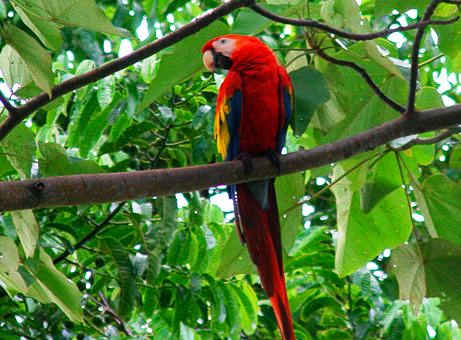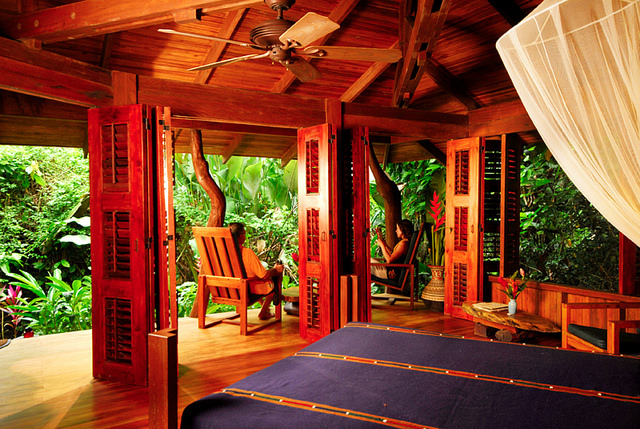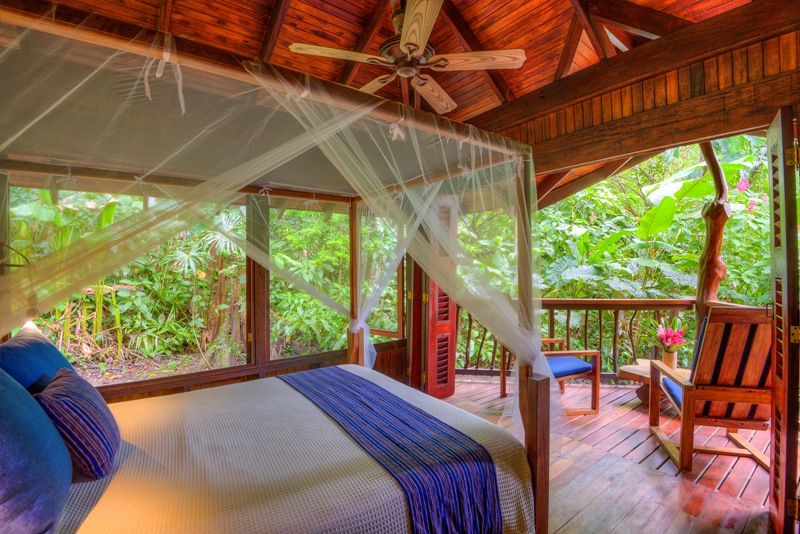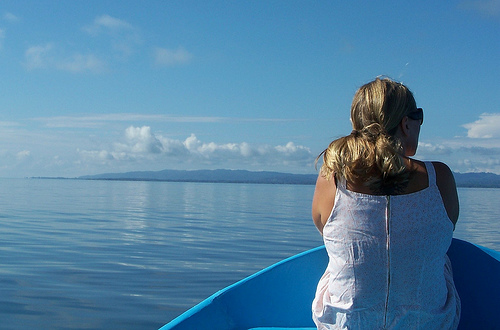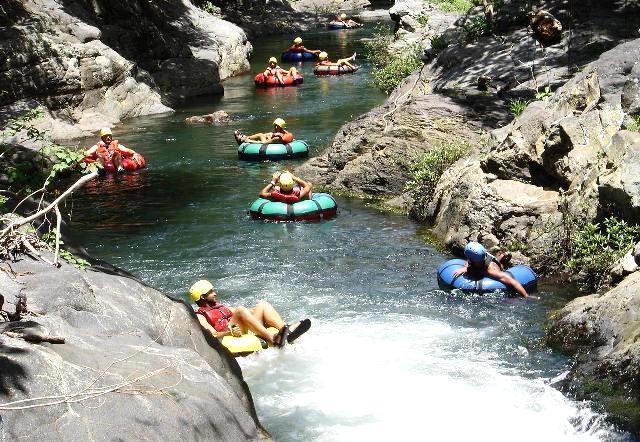Step into the enchanting world of the Scarlet Macaw, where vibrant feathers and melodic calls paint the backdrop of your adventure at Nicuesa Rainforest Lodge. These magnificent tropical birds, with their resplendent plumage and unmistakable squawks, are not just residents of the lodge’s surroundings—they are the vibrant heartbeat of this lush ecosystem. Prepare to be captivated as you delve into the colorful realm of the Scarlet Macaw during your stay at Nicuesa Rainforest Lodge
Meet the Scarlet Macaw
Scarlet Macaws (Ara macao) are among the most iconic birds in Costa Rica, known for their dazzling red, blue, and yellow feathers. They are large birds, measuring around 33 inches (84 cm) in length, with broad wings that allow them to glide effortlessly through the rainforest canopy.
Their intelligence and social nature make them fascinating to observe. Macaws often fly in pairs or small groups, displaying intricate aerial maneuvers and calling out in loud, distinctive squawks that echo through the forest. Their playful behavior includes engaging in aerial displays, feeding on nuts and fruits, and nurturing their young with great care.
An endangered species, the Scarlet Macaw lives in tropical forests from Mexico to South America. According to Macaw Recovery Network, about 2000 live in Costa Rica. Its cousin, the Great Green Macaw, is listed as critically endangered. In Costa Rica, there are only about 300, and can be spotted on the Caribbean coast.
Other interesting aspects of this beautiful and intelligent bird include.
- They live between 30 – 50 years in the wild
- They mate for life.
- They love coastal almond trees.
- They make nesting holes in mature trees.

Discovering Scarlet Macaws at Nicuesa Rainforest Lodge
At Nicuesa Rainforest Lodge, guests have the unique opportunity to witness Scarlet Macaws up close. As you explore the pristine rainforest surroundings, listen for the piercing calls of these magnificent birds as they glide through the canopy. You might even spot a pair feeding on the almond trees by the beach if you’re lucky. They will let you know when they arrive and leave.
The Scarlet Macaws are just one of the hundreds of other bird species that grace the 165 acres of rainforest in the private Nicuesa reserve, the Piedras Blancas National Park, and beyond.
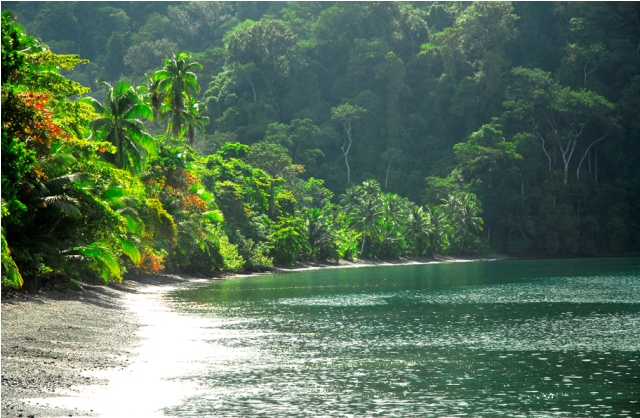
Conservation Initiatives for Scarlet Macaws
Scarlet Macaws have faced threats due to habitat loss and the illegal pet trade. However, Costa Rica has been at the forefront of conservation efforts to protect these birds. The country’s commitment to preserving its rich biodiversity has led to successful initiatives to safeguard Scarlet Macaws and their habitats.
One key aspect of conservation efforts is habitat restoration. Reforestation projects aim to create safe, connected corridors for Macaws and other wildlife to thrive. Additionally, establishing protected areas and wildlife sanctuaries provides secure environments where these birds can live and reproduce without human interference.
Education and community engagement are also vital components of Scarlet Macaw conservation. Local communities play a significant role in protecting these birds by participating in awareness campaigns and monitoring programs.
The Macaw Recovery Network operates a breeding and wilderness release program for the Great Green Macaw (Ara ambiguus) and the Scarlet Macaw (Ara macao) in Costa Rica. Among other initiatives, the organization has developed several re-introduction sites around the country. It has reintroduced 50 Great Green Macaws and over 174 Scarlet Macaws to their natural habitats in collaboration with both the public and private sectors.
As stated on their website,
“This collective of wildlife professionals encourages increased capacity through research, training, and exchange among conservationists. We believe the recovery of Neotropical parrot species across their ranges is only possible when forward-thinking individuals and organizations come together to push the boundaries of conservation.”
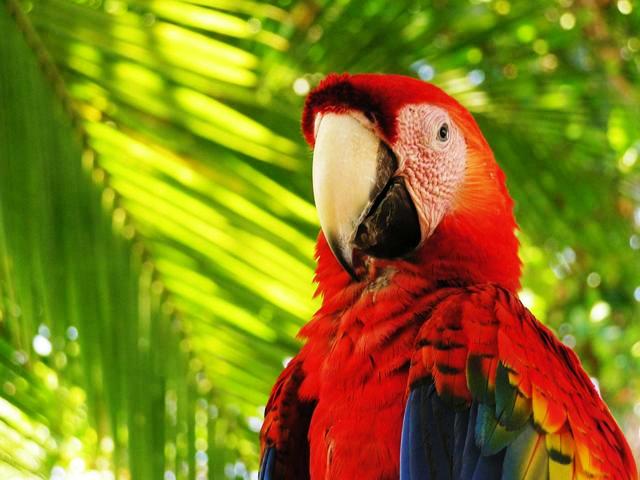
How You Can Help
As a guest at Nicuesa Rainforest Lodge, you can contribute to the conservation of Scarlet Macaws and other wildlife. You become part of the solution by respecting the lodge’s eco-friendly practices and supporting local conservation initiatives. You can also take part in guided nature walks and birdwatching tours to learn more about these incredible birds and their role in the ecosystem.
If you would like to donate to the Scarlet Macaw cause, the Macaw Recovery Network could be a good place to start. Not only can you adopt a Macaw, but you can also donate to reforesting and habitat restoration programs and Community outreach programs.
A visit to Nicuesa Rainforest Lodge offers an unparalleled opportunity to experience the beauty of the Scarlet Macaw in its natural habitat. Through conservation efforts and your participation in sustainable tourism, you can help ensure the continued survival of these majestic birds for generations to come. So, come join us at Nicuesa Rainforest Lodge and be part of the vibrant symphony of color and sound that is the Scarlet Macaw!



